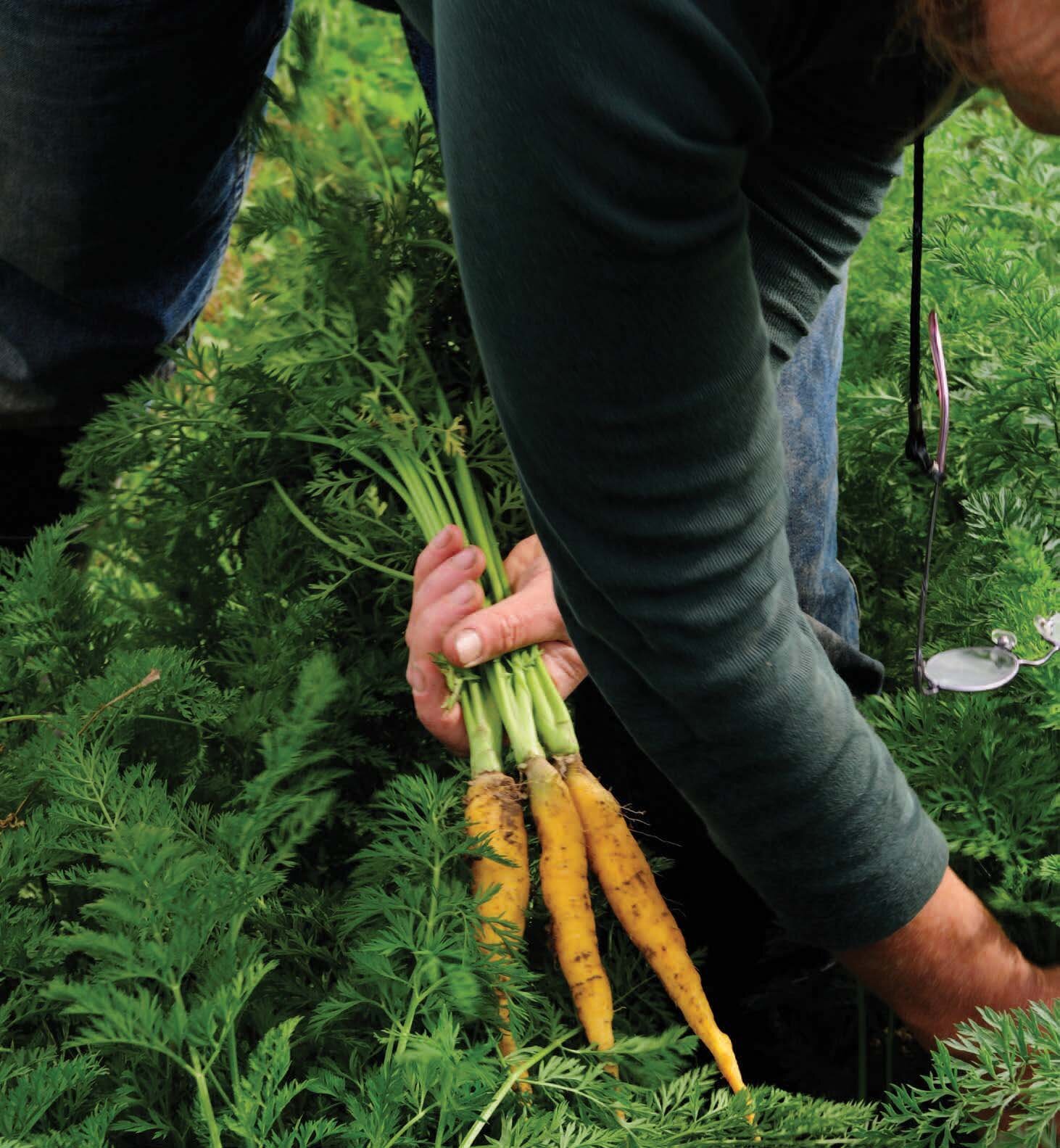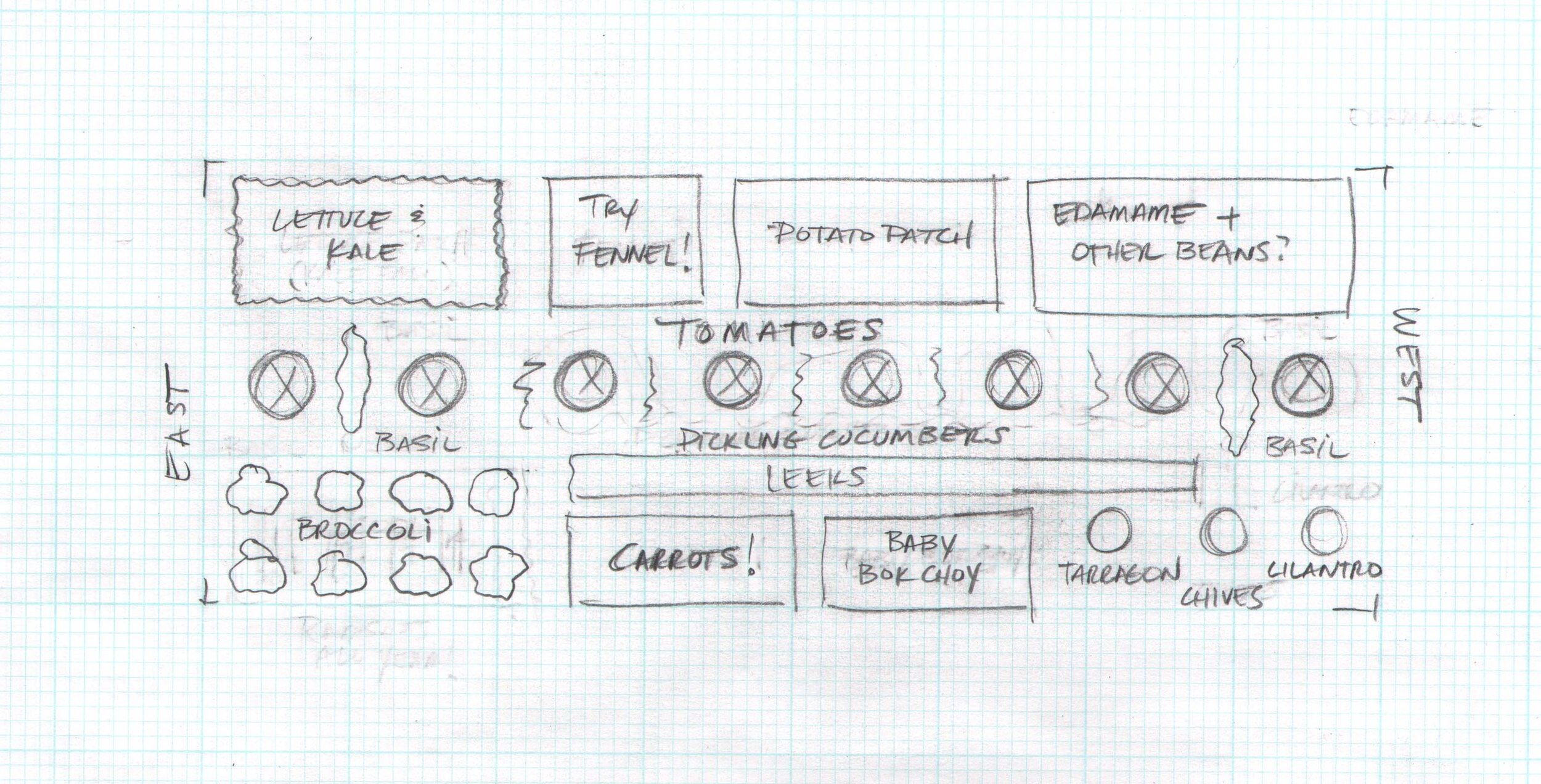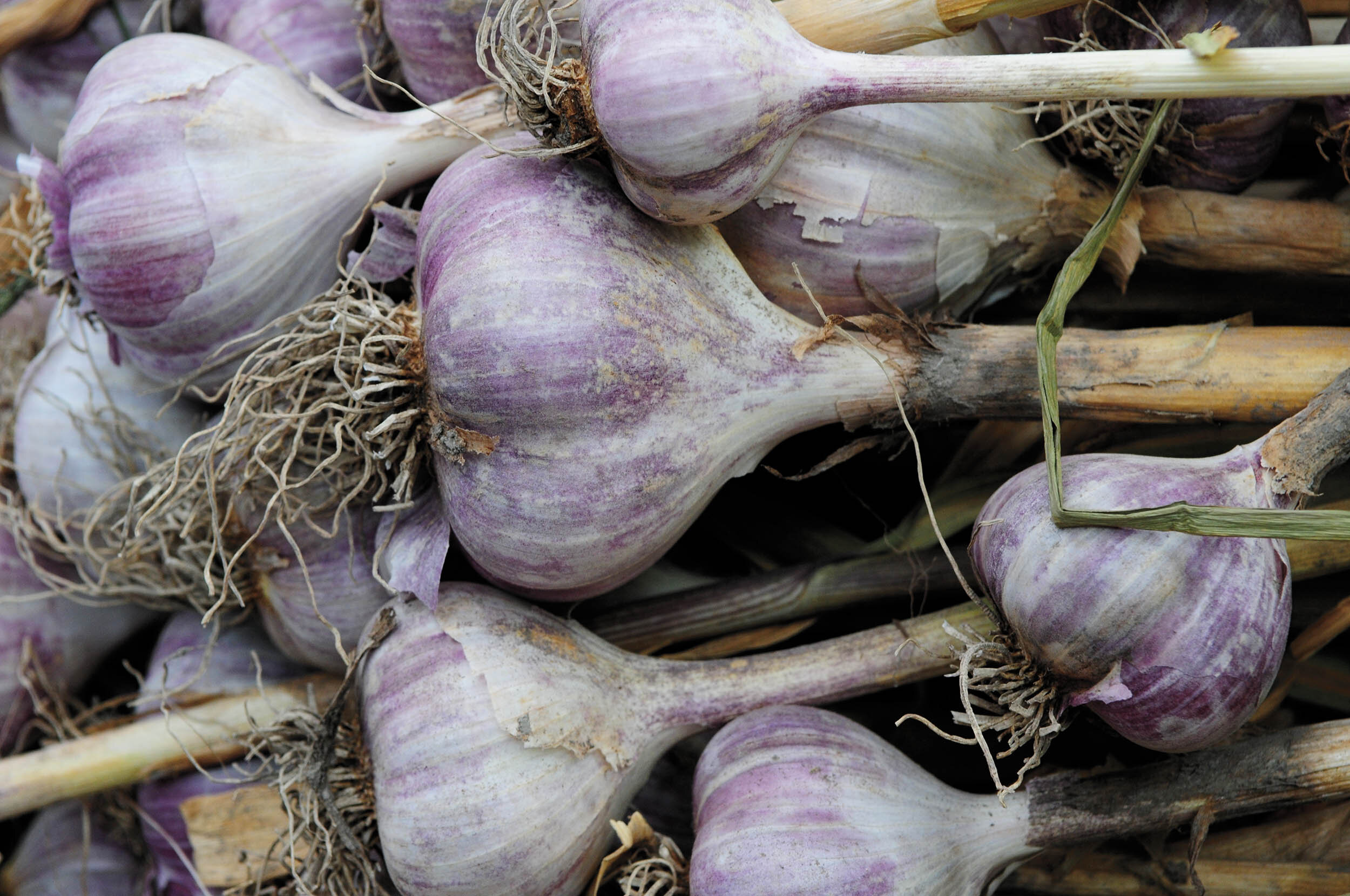The Stinking Rose: Part II

Part II
Garlic is incredibly old. Ancient writings date its use back to 3000 BC by the Egyptians. Chinese and Indian cultures valued garlic for its medicinal and Ayurvedic properties, and certain religious orders of those regions considered it a forbidden aphrodisiac. Interestingly, garlic wasn’t used for cookery in ancient civilizations because of its strong odor.
My family’s culinary background is distinctly Austro-Hungarian, where garlic is used sparingly (garlic’s Allium cousin, the onion, is the preferred aromatic). I don’t remember seeing a single garlic bulb in my youth. In fact, I first learned about the uses of garlic from author Stephen King when I was a tween reading his novel "Salem’s Lot." (Yes, I had to get the clichéd vampire reference in here somewhere; now I can move on.)
Initially brought over in dribs and drabs to the New World by European immigrants, garlic, as a crop domesticated to our growing climate, didn’t really take hold until the 20th century. In the 1980s, the USDA finally received permission from the then-Soviet Union to gather up samples from its vast garlic collections growing in the soil-rich Caspian Mountain region. Back in the U.S., the USDA partnered with growers on our home soil to cultivate these specimens for a whole new market. The garlics we know today likely descended from that effort.
Varieties of Garlic
Botanists use 10 classifications to organize the hundreds of garlic cultivars grown today: Porcelain, Standard Purple Stripe, Marbled Purple Stripe, Glazed Purple Stripe, Rocambole, Creole, Asiatic, and Turban (all hardnecks), plus Artichoke and Silverskin (both softnecks).
Our Midwestern environment can support quite a number of garlic cultivars, as many are specifically coldweather plants. They’re a joy to grow — perfect for the beginning gardener — and a garden staple for avid cooks. June and July is the best time to begin researching this year’s available garlic strains for planting in the fall. By then, growers will have a really good idea of what their harvest will look like in terms of what they can offer for sale versus what they have to hold back for sowing. (For in-depth information on planting garlic in your home garden, find the Holiday/Fall 2013 issue on EdibleOhioValley.com.)
Let’s take a quick look at these 10 varieties and note how well each is suited to our Ohio Valley climate.
Porcelains
I have a particular affection for the hardneck Porcelain garlic. From a cooking perspective, it’s a solid, all-purpose performer, with a robust flavor that blends seamlessly into all world cuisines.
From a home gardener’s perspective, it’s perfection on a stalk. A cold climate variety, Porcelains do incredibly well in our region. I’ve grown a lot of Porcelain garlics in my time, and they not only have had a 100% germination rate in my yard (100%!), but I’ve never had to toss a single bulb due to rot, disease, or malformation. With proper curing, they store fabulously: 9 to 10 months in my cool basement.
Porcelain bulbs are large, beautifully formed, and contain 4 to 7 plump, oversized cloves clustered around the central stalk. Bulb wrappers have a white exterior that often reveals purplish stripes as you peel away the layers. The plants are tall with sturdy stalks and produce scapes that curl every which way, giving a wild serpent effect to the garlic garden every May.
My go-to Porcelains are Georgian Crystal, Music, and German White. For the past couple of years, I’ve seen some gorgeous Porcelains for sale at the local farmers’ markets — particularly Music, as it’s positively pictureperfect sitting in a wicker basket on the table. If you’re not growing your own this year, keep an eye out at the farmers’ markets mid-summer for these wonderful specimens. I love the Porcelains so much that they account for two of the four varieties that I’m growing in 2014: Georgian Crystal and Music.
Purple Stripes (Standard, Marbled, and Glazed)
Close behind the Porcelains in terms of favorites are the Standard Purple Stripes, but for an entirely different reason. While the Porcelains are hearty and solidly garlicky, Standard Purple Stripes are the tamer siblings, fit not just for cooking, but also for salad dressings and other raw preparations where you don’t want to overwhelm the people in the room with the, uh, essence of garlic. My favorite Purple Stripe cultivar, the sweet and mild Chesnok Red, makes outstanding roasted garlic, dressings, and sauces.
Purple Stripes have, as the name suggests, purple coloration, although not necessarily limited to vertical stripes. Many begin with white wrappers — or wrappers faintly blushed with purple — giving way to deeply swirled or striped inner layers and sometimes solid brown or purple clove covers. The bulbs are slightly smaller than Porcelains, with twice as many (and therefore smaller) cloves. The smaller cloves are more convenient for preparing recipes that call for “one small garlic clove, minced.” The scapes of Purple Stripes are funny little things, doing a full double loop before straightening out. In late spring, when all of my garlic plants are tossing out scapes, I can identify the Purple Stripes just by their cute, double loop-de-loop scapes. Purple Stripes store medium-well, 7 to 9 months.
The Marbled and Glazed varieties are noted as much for their coloration as for the long, pointy tips of their cloves, which are so distinct that I thought my first crop had experienced a growing idiosyncrasy of some sort. Glazed Purple Stripes have an interesting interior layer of almost glassy wrappings (hence the name).
Word to the wise: the Marbled and Glazed Purple Stripes are sometimes very hot and are not for the faint of heart (research the varieties before hitting Add to Cart on your online seed catalog purchase this year). A simple sauté will tame even the most eye-watering garlics, but I will never again make the mistake of absentmindedly reaching for Chesnok Red on the counter only to come away with Bogatyr (a Marbled hot-hothot cultivar) to add to a vinaigrette.
Rocambole
A true Northern-grower, Rocambole needs a good winter nap if it’s to be pretty and perfect in the spring. Similar to Purple Stripes, Rocamboles boast beautiful, striped, splotchy colorings, and nicely shaped, richly flavored cloves. Bulbs are uniform, with 8 to 12 cloves.
The one downside to Rocambole is that its easyto- peel nature means it’s a terrible storer. In fact, by the time you read this, my 2013 crop of Italian Purple will be long gone, even as my Porcelains and Purple Stripes are still looking quite pert. I grow Rocamboles primarily for summer cooking rather than storing. It’s usually the first garlic in my garden to reach maturity with an early summer harvest, and its well-balanced garlic flavor goes wonderfully with summer’s fresh produce recipes.
Creoles
Creoles are stunning garlic specimens, rich in both beauty and flavor. Our hardiness zone 6A teeters on the edge of Creole garlic’s acceptable climate. Though it’s primarily a southern grower, I’ve rolled the dice and grown several Creole cultivars with varying success. Burgundy was by far my favorite, followed closely by Ajo Rojo. Unusually warm winters in the years I grew them produced what were probably somewhat rare robust harvests for our Ohio Valley region.
From striped rosy pink to deep, solid red, Creoles are glamour garlics, and when left on the counter never fail to elicit comments from visitors. Slightly better storers than Rocamboles, they’re best used by the end of fall (dehydrating them, if there are leftovers, to produce the best garlic powder, ever).
Asiatic and Turbans
Asiatic garlics (named for their origin) and Turban garlics (named for the shape of their seedhead umbel) are southern growers, preferring the warm, dry winter climates of our southwestern states. Both varieties are generally softneck in structure, but usually produce scapes (which true softnecks do not). Like Rocamboles and Creoles, these are beautiful and flavorful garlics, but are rarely seen in northern states. That’s not to say one can’t give it a go — I’m always up for a challenge — but I wouldn’t grow only these varieties if I actually want to use my harvest.
Silverskins
Finally, we come to the softnecks. Equal in number to the vast variety of hardnecks, softnecks distinguish themselves in several key facets. The neck that joins the cloves together is flexible, making it suitable for braiding stalks together in an attractive presentation. They also feature late-season harvests and thick skins, which makes them outstanding storers. I prefer growing hardnecks simply for the scapes, but the scapes are by no means the only part that I use. I have grown the lovely Nootka Rose variety in the past. It’s the only garlic in my gardening history whose winter storage easily intersected the next year’s harvest. It was quite a year for cooking, never having to go without homegrown garlic.
Artichokes
If you’ve ever wondered about grocery store garlic, meet the Artichoke garlic. California producers grow dependable warm-winter variety Artichoke cultivars — both early and late — for supermarkets across the country. These garlics are thick-skinned, rough-and-tumble travelers that store very well.
Because Artichokes are so widely available — just step into the produce section of any Kroger in the area — I don’t allocate precious garden space to it. The Artichoke garlic was, however, my very first foray into growing garlic (the cloves cracked off on a whim from a Kroger bulb and planted early one fall many years ago) and is responsible for opening my eyes to the wonders of homegrown garlic. So, I can’t be too blasé about it.
If you’re ready to jump on the homegrown garlic bandwagon, that grocery-store bulb is an economical seed source for home gardeners who simply want to experiment with garlic plants before committing to the crop whole-heartedly. Start with a single row, and see if you aren’t poring through seed catalogs the following growing season, seeking other varieties to try among the Porcelains and Purple Stripes and Rocamboles.
Karen is a four-season vegetable gardener and seed-totable advocate, blogging at SoupAddict.com. Her current garden crushes include black heirloom tomatoes, dill, lovage, and a small bay laurel shrub that flavors her soups. Her most heartfelt wishes are for world peace (of course), kindness to animals, bike lanes in Anderson, and for everyone to grow something edible at home.





